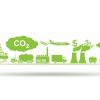
Policy Brief #09, December 2009. IIASA has developed an easy-to-use online calculator to help industrialized countries compare efforts to lower greenhouse gas (GHG) emissions with those of other countries. The calculator is designed to explore alternative schemes for sharing the burden between countries, and it can help industrialized countries identify a mutually agreeable set of GHG emission reduction targets.
Summary
- One of the key issues facing the current negotiations for a post-2012 agreement on climate change is how much industrialized (Annex I) countries are willing to reduce their emissions of greenhouse gases (GHG).
- Agreement on emission targets among the 37 Annex I countries is complex. Only a deal that is fair in sharing the burden of cutting GHG emissions, reflects national circumstances and minimizes the collective cost of tackling climate change will be sustainable.
- Emission targets can be based on a range of criteria such as a country’s economic capacity to lower GHG emissions, a country’s responsibility for current or past GHG emissions, and the technical potential for a country to reduce emissions.
- An open and transparent comparison of alternative schemes for sharing the burden among industrialized countries can help identify mutually agreeable targets.
- IIASA has developed a scientific tool, known as the GAINS Mitigation Efforts Calculator, that analyzes mitigation efforts up to 2020 for a range of criteria for Annex I countries. The calculator is the only tool that is both freely available on the Internet and developed by an international organization.
- The easy-to-use online calculator of mitigation efforts allows users to pose any number of questions such as: What is the most cost-effective approach to lowering GHG emissions across Annex I countries? How would such targets share the burden of mitigation efforts between countries? How do the mitigation costs differ among countries if a target based on emissions per person is adopted?
- The calculator queries the IIASA GAINS (Greenhouse gas – Air pollution INteractions and Synergies) model, which analyzes all six greenhouse gases included in the Kyoto Protocol and covers all anthropogenic sources included in the emission reporting of UNFCCC Annex I countries. GAINS considers around 300 different national mitigation options, and uses the best available data including new statistics that account for the impact of the current economic crisis.
- GAINS also identifies co-benefits from cutting GHGs in terms of reducing emissions of other air pollutants whose negative impacts include damage to human health and to crop production.